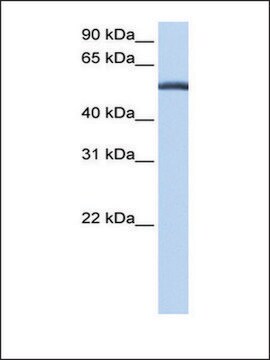CMC0014
BL21(DE3) Chemically Competent Cells
Escherichia coli, rod shaped
Synonym(e):
Competent E. coli cells
About This Item
Empfohlene Produkte
Produktbezeichnung
BL21(DE3) Chemically Competent Cells, for protein expression
Biologische Quelle
Escherichia coli
Qualität
for molecular biology
Wachstumsmodus
adherent or suspension
Morphologie
rod shaped
Methode(n)
microbiological culture: suitable
Zelltransformation
competent cell type: chemically competent
transformation efficiency: ≥1 x 107 cfu/μg
Versandbedingung
dry ice
Lagertemp.
−70°C
Allgemeine Beschreibung
Genotype
F – ompT hsdSB (rB- mB-) gal dcm (DE3)
Anwendung
Leistungsmerkmale und Vorteile
- a transformation efficiency of >1 × 107 cfu/μg.
- economical prices
- offering superior value for everyday protein expression work.
Komponenten
- BL21(DE3) chemically competent cells
- pUC 19 transformation control DNA
- recovery medium for expression
Ähnliches Produkt
Lagerklassenschlüssel
10 - Combustible liquids
Hier finden Sie alle aktuellen Versionen:
Analysenzertifikate (COA)
Die passende Version wird nicht angezeigt?
Wenn Sie eine bestimmte Version benötigen, können Sie anhand der Lot- oder Chargennummer nach einem spezifischen Zertifikat suchen.
Besitzen Sie dieses Produkt bereits?
In der Dokumentenbibliothek finden Sie die Dokumentation zu den Produkten, die Sie kürzlich erworben haben.
Kunden haben sich ebenfalls angesehen
Verwandter Inhalt
BL21 Chemically Competent Cells come in aliquots for easy transformation with heat shock method, facilitating molecular biology experiments.
Aktive Filter
Unser Team von Wissenschaftlern verfügt über Erfahrung in allen Forschungsbereichen einschließlich Life Science, Materialwissenschaften, chemischer Synthese, Chromatographie, Analytik und vielen mehr..
Setzen Sie sich mit dem technischen Dienst in Verbindung.






